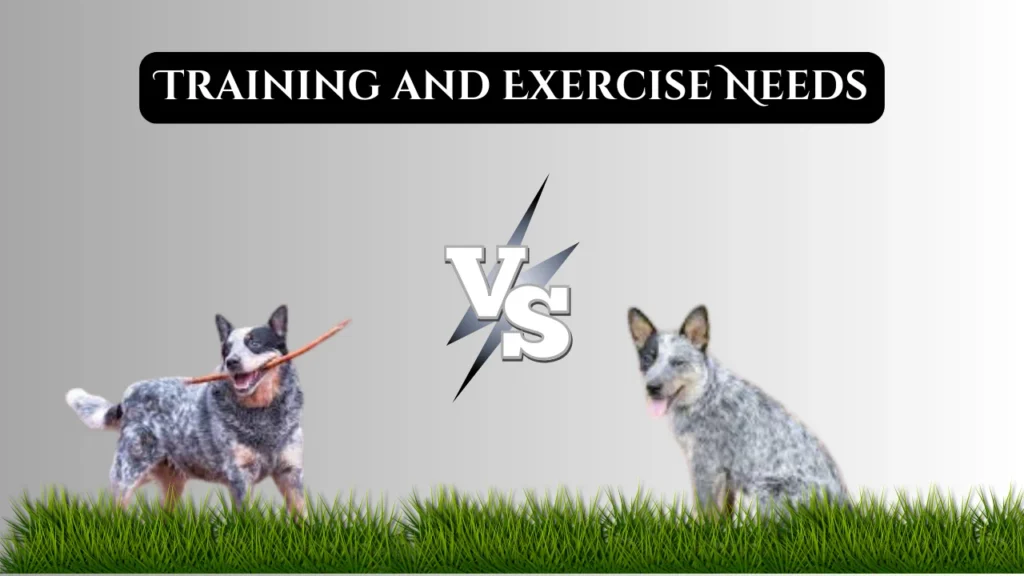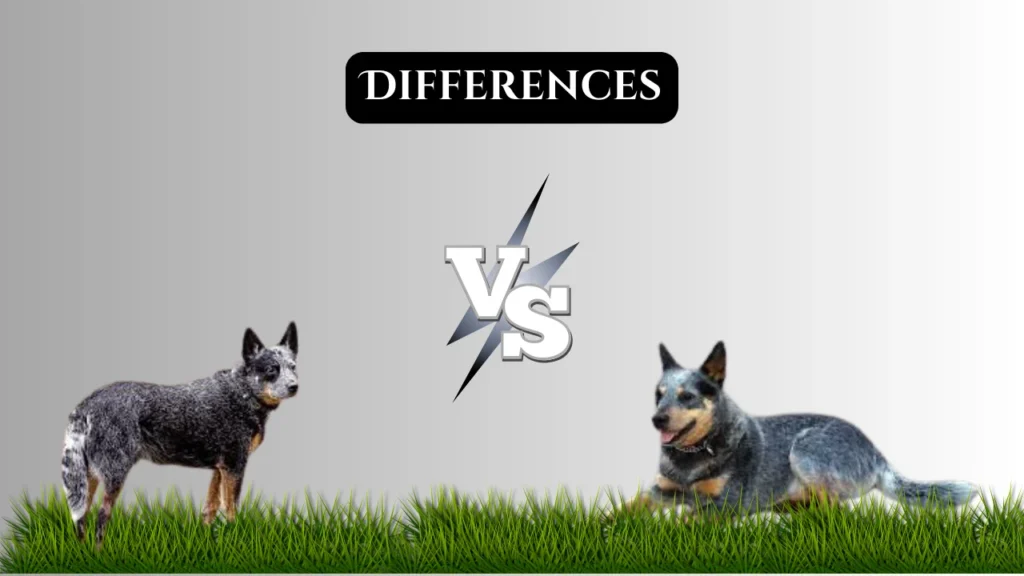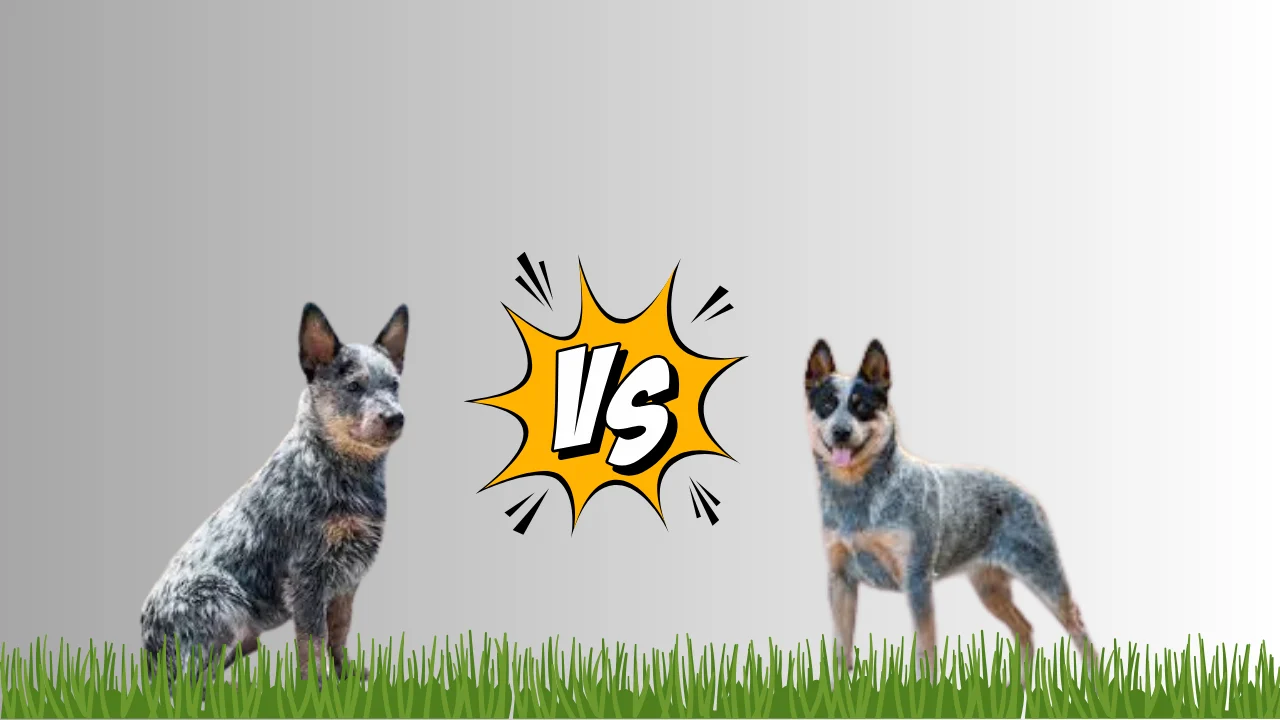When I first encountered the debate over the Australian Cattle Dog vs Blue Heeler, I was intrigued by how often people confuse the two. These dogs have been around since the 1800s, originally bred for herding cattle in the harsh Australian outback. Here’s a fun fact: “Blue Heeler” is simply a nickname for the blue-mottled coat variety of the Australian Cattle Dog. As energetic working dogs that thrive outdoors, they often explore grassy fields and woodland trails, making tick awareness essential. Knowing how to distinguish between Deer Ticks and Dog Ticks can go a long way in keeping your active companion safe and healthy all year round.
These incredible dogs are among the top 10 most intelligent breeds in the world, known for their sharp minds and stamina. They can herd cattle over 20 kilometres daily, showcasing their hardworking nature.
Terminology and Origin

When I first learned about Australian Cattle Dogs, I was surprised to hear the term “Blue Heeler” used so frequently. The distinction between Australian Cattle Dogs and Blue Heelers is a common source of confusion, and if you’ve ever wondered whether they are two separate breeds, you’re not alone! Let’s clarify this together.
Understanding the differences between the Australian Cattle Dog vs Blue Heeler can help prospective owners choose the right breed for their lifestyle.
What Is an Australian Cattle Dog?
The Australian Cattle Dog (ACD) is the official name recognised by the American Kennel Club since 1980. It’s a herding breed developed initially in the 19th century. These dogs were bred to drive cattle across Australia’s rough terrain, covering up to 20 miles daily!
Why Are They Called Blue Heelers?
The nickname “Blue Heeler” comes from their signature blue coat and their heeling behaviour, nipping at cattle’s heels to herd them. Around 70% of these dogs are either blue or blue-speckled, which makes the name fitting. Red-coated ones, however, are called “Red Heelers.”
A Breed with a History
Did you know the Australian Cattle Dog’s lineage includes the dingo? In the 1840s, breeders crossed dingos with Collies and Dalmatians to create this hardy breed. The Australian Cattle Dog vs. Blue Heeler comparison is a common one, as this mix is known for its unmatched stamina, intelligence, and a lifespan of 12-16 years.
The Global Use of Names
Interestingly, the term “Blue Heeler” is most popular in Australia and the United States. Meanwhile, “Australian Cattle Dog” is the go-to term worldwide, especially in professional and breeding circles. Fun fact: over 15,000 ACDs are registered annually!
Read more: Compare Lhasa Apso vs Shih Tzu Dogs to choose the perfect breed for your family.
Physical Characteristics of Australian Cattle Dog (ACD)
Let’s dive into what makes these dogs stand out physically. From their coats to their build, every detail reflects their hardworking nature and adaptability.
General Appearance
The Australian Cattle Dog is a medium-sized, muscular breed. Typically, they weigh between 35 and 50 pounds and stand around 17 and 20 inches tall at the shoulder. Their compact, robust bodies are built for endurance and agility.
Coat Colors
One of their most striking features is their coat. They come in blue or red speckled patterns. Blue Heelers, specifically, have blue or blue-mottled coats, which comprise approximately 60% of the breed’s population.
Distinctive Markings
These dogs often have unique markings that set them apart. For instance, many have a white patch on their heads called a “Bentley Mark,” seen in 80% of the breed. This trait adds to their charm and individuality.
Temperament and Behaviour
Let’s talk about what makes the Australian Cattle Dog, including the Blue Heeler, such an incredible companion. These dogs are known for their intelligence, loyalty, and high energy levels. If you’re looking for a mix of brains and brawn, this breed is a great choice.
Intelligent and Highly Trainable
Australian Cattle Dogs rank among the top 10 most intelligent dog breeds in the world. They excel at learning commands, often mastering a new trick in under 10 repetitions. Their sharp minds make them perfect for herding tasks and even agility competitions.
Strong Herding Instincts
These dogs are born herders, capable of managing livestock across vast fields. They can guide a herd of 100 cattle efficiently, thanks to their sharp instincts and quick movements. Be prepared for them to “herd” you or your family during playtime!
Loyal but Independent
With their roots as working dogs, ACDs are both loyal to their owners and fiercely independent. They bond deeply with their family, often choosing one person as their favourite. However, their independence means they need firm training early on to avoid stubbornness. If you’re concerned about ear health, check out our expert guide on Ear Infections: Dog Ear Mites vs Ear Wax.
Caring for an Australian Cattle Dog
When it comes to health, there’s good news: they are a sturdy breed! However, like all dogs, they may have some health concerns. Let’s explore their typical health conditions, lifespan, and strategies for maintaining their well-being.
Common Health Issues
These dogs are generally healthy, but about 25% may develop hip dysplasia, which can impair their mobility. Deafness is another concern, affecting around 10% of the breed. Regular health screenings can help detect these problems early.
Lifespan Expectations
These dogs typically live a long and healthy life, averaging about 12 to 16 years. Their active lifestyle contributes to their longevity. Keeping them engaged with daily exercise and a proper diet can add quality to their years.
Regular Veterinary Care
Routine vet visits are crucial for detecting health issues early. Vaccinations, dental care, and annual check-ups can help prevent more significant problems later. On average, expect to spend between $500 and $1,000 annually on basic care.
Training and Exercise Needs

Training and exercise are vital for high-energy working dogs. These breeds excel when they are both physically and mentally stimulated, so regular activity is essential. Let’s explore their specific needs to ensure they remain healthy and happy.
Daily Exercise Requirements
Both breeds require at least 1-2 hours of exercise daily to expend their boundless energy. Activities like running, fetching, or even agility courses work wonders for them. Without sufficient exercise, they might channel energy into destructive behaviours.
Mental Stimulation
These dogs require regular mental stimulation and challenges. Puzzle toys, obedience training, and herding tasks are excellent ways to engage their minds and keep them mentally stimulated. Spending 20-30 minutes daily on mental tasks keeps them sharp and satisfied.
Socialisation and Behavioural Training
Socialisation during the first 12 weeks is critical to prevent shyness or aggression. Regular exposure to diverse people, animals, and environments helps maintain their well-being. Basic obedience training, starting at eight weeks, ensures a disciplined and happy pet. For more information on identifying common conditions, check out our guide on Dog Tumour and Cyst Comparison.
Grooming and Maintenance
When it comes to taking care of an Australian Cattle Dog or a Blue Heeler, grooming is relatively low-maintenance. However, a routine keeps their coats healthy and shiny. Let’s dive into how you can ensure your pup always looks and feels great.
Coat Care and Shedding Patterns
The Australian Cattle Dog has a double coat, which sheds twice a year. During shedding seasons, which usually happen in spring and fall, you’ll notice a significant increase in loose hair of up to 70%. Weekly brushing during these times helps manage shedding and keeps you and your furniture fur-free.
General Grooming Needs
These dogs only need baths once every two months, unless they’ve had a particularly muddy adventure. Over-bathing can strip their coat’s natural oils, which are crucial for waterproofing. Nail trimming every 4-6 weeks and regular ear checks should also be part of their grooming routine.
Tips for Maintaining a Healthy Coat
To keep their coat shiny and skin healthy, focus on a balanced diet. High-quality dog food makes all the difference. Omega-3 and omega-6 fatty acids are key for reducing shedding by up to 25%. Don’t forget to hydrate; an average dog needs about an ounce of water per pound of body weight daily.

Understanding the differences between the Australian Cattle Dog and the Blue Heeler can be a bit confusing at first. But don’t worry, I’ll break it down in an easy-to-follow way with numbers, facts, and clarity!
| Aspect | Australian Cattle Dog (ACD) | Blue Heeler |
|---|---|---|
| Official Name | ✅ | — |
| Nickname | — | 🔹 Blue-coated ACD |
| Colour Range | Blue & Red-speckled | Only Blue variety |
| Regional Usage | Europe, pedigree circles | US & Australia |
| AKC Registration Usage | “ACD” used in 80%+ cases | Informal only |
Wrap Up
After diving into the Australian cattle dog vs blue heeler debate, it’s clear they’re the same incredible breed with a slight twist! Known for their 12–15 years of loyalty and herding instincts, they’re perfect for families who love the outdoors.
Whether you call them Blue Heelers or Australian Cattle Dogs, their energy and intelligence make them stand out as companions. Fun fact: Nearly 80% of owners report excelling in agility sports. So, what will you call your furry best friend?
Frequently Asked Questions
Are Australian Cattle Dogs the same as blue heeler dogs?
Yes, Australian Cattle Dogs and Blue Heelers refer to the same breed.
How do Australian Cattle Dogs and Blue Heelers handle being left alone for extended periods?
Australian Cattle Dogs and Blue Heelers can experience anxiety when left alone for extended periods of time. They are highly intelligent and active breeds that require mental and physical stimulation. To manage their time alone, ensure they have plenty of exercise before being left, provide engaging toys, and consider crate training to create a safe space. Gradual desensitisation to being alone can also help. If possible, arrange for a dog walker or pet sitter to break up long periods of solitude.
How do I tell if my dog is a Blue Heeler?
To determine if your dog is a Blue Heeler, look for the following characteristics:
**Coat Colour**: Blue Heelers typically have a short, dense coat that is blue or blue mottled with tan markings.
**Body Structure**: They have a compact, muscular build, with a broad head and a pronounced forehead.
**Ears**: Their ears are medium-sized, erect, and pointed, often resembling a triangle.
**Tail**: The tail is typically medium-length and straight, often carried high.
**Temperament**: Blue Heelers are known for their intelligence, energy, and herding instincts. They are often very loyal and protective.
If your dog exhibits most of these traits, it may be a Blue Heeler. For a definitive identification, consult a veterinarian or a breed expert.

